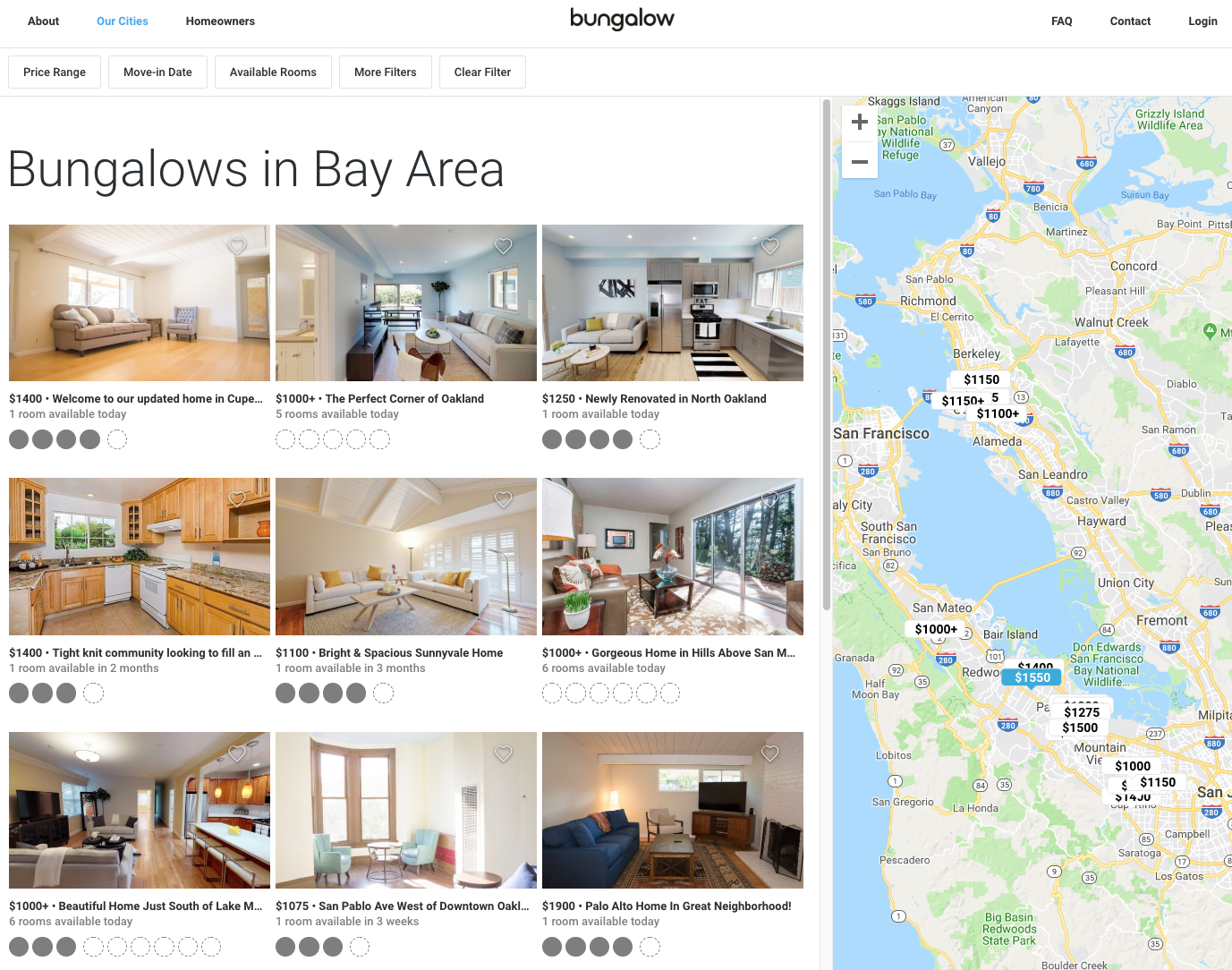Maria Palma is vice president of Business Development and head of Platform at
RRE Ventures.
Build versus buy? Potential partner or potential disruptor?
The option set for corporations to collaborate with startups used to be simpler. Today, the options seem almost endless: build, partner, buy, integrate with their APIs, co-develop product together, white-label a part of their technology, share specific data sets, cross-sell each other’s products — and more. The notion of a straightforward “vendor” relationship doesn’t apply anymore.
The landscape has also changed. If the corporate posture of the past around innovation could be described as “not invented here” with a strong bias toward building internally, today’s corporate posture leans in a much different direction, with many thinking about how to disrupt themselves before an external party beats them to it.
Not surprisingly, this has created more corporate and startup partnerships. While getting this type of collaboration right is beneficial for both parties, if you speak to most startups selling into large enterprises or corporate executives looking to partner with startups today, you will find many justifiable frustrations on both sides.
As the vice president of Business Development at RRE Ventures, an early-stage venture capital firm based in New York, a major part of my role is leading our business development initiatives, where we enable collaboration between corporations and startups. Before this role, I spent time on the corporate side and on the startup side, so I’ve gotten to see this dynamic from both angles throughout my career. While there is no silver bullet for this type of work, here are a few best practices I’ve learned, sometimes through painful mistakes, or observed along the way.
For startups looking to sell into large enterprises
Do your homework. Corporate executives expect you to be prepared. Spend the time to understand what their business might be going through. Do they need new growth opportunities? Do they need to cut costs? Given the size of these companies, it’s easy to find information on them.
Spend time reading recent press, analyst reports on the company or understanding more about the division you are speaking to. You want to walk in saying some version of “Here is how I think my product can be relevant to you and help you with one of your key objectives” instead of saying some version of “Here is my shiny object — don’t you want to buy it?”
Be realistic about where you are and where you are headed. The last thing you want to happen is for a corporation to agree to use or test your product only for you to tell them in the next sentence that you haven’t yet launched or built what you just showed them. Be realistic with the corporation about what you can do for them today, tomorrow and in the future. They will be more flexible than you might think if they understand your timelines and product road map.
Focus on ease of use and ease of integration. We might all be reading headlines about Mars exploration these days, but let’s ground ourselves in a different space reality. It’s not uncommon for major Fortune 500 companies today to still be operating tech or leveraging data models that were built before man was put on the moon. Your technology might be incredible, but if they can’t test it easily or seamlessly integrate it with their tech stack, you are unlikely to get real traction.
Understand the complexities of operating at scale. Think of your own trajectory as a company and how hard it has been to scale your company, from getting the right people to growing revenue and building the right product — and every detail in-between. Now multiply that by a million. Even though Fortune 500 corporations have more resources in absolute magnitude, they have all the same problems you do, often with more complexities, given their scale.
The option set for corporations to collaborate with startups used to be simpler.
If integrating your product has negative consequences for them, it will likely affect millions of customers, billions of dollars of revenue and have major brand and shareholder consequences, so have some empathy on why they want to properly vet your product and company first.
Learn to fly at 30,000 feet or 30 feet. Effective startup leadership requires one to zoom in and out on a daily basis, quickly and seamlessly. The ability to quickly shift gears and move between big picture and small details is crucial for operating early-stage companies. It’s also essential for working with corporations. Depending on the meeting, a prospective client might want you to go into the technical weeds or have a strategy discussion on a use case that’s not on your road map.
Be ready to fly at both levels, and also be deliberate about where you personally spend your time, as it’s your scarcest asset while running a resource-constrained startup.
For corporations looking to integrate new technologies
Optimize for quality, not quantity, and focus on real use cases. While it can be tempting to meet with every startup employing the right buzzword of the moment (artificial intelligence, blockchain, machine learning), you want to avoid going on a startup safari where you see a number of cool things in the wild and walk away without doing anything differently in your organization.
Instead of meeting with technology companies based on buzzwords, identify real problems your organization needs to solve and find companies that can help you solve those problems. What matters in the end is translating technology to real tangible use cases that are digestible internally in your organization.
Make fast decisions. As a corporate executive I know puts it, “Maybes kill startups. A fast No is the best thing after Yes.” If you know you are not going to leverage the company’s product, say no as quickly as possible. With fewer resources, startups don’t have the same meeting after meeting bandwidth as you. Remember, saying no now isn’t no forever.
You don’t want to spend months creating a partnership only to find out the technology isn’t what you expected.
Should you find yourself in a different situation a few months from now, you can always go back and revisit the company. In either case, please give startups real feedback, especially when you don’t move forward with them. In many cases these companies are early on in their growth trajectory, and providing honest feedback helps them build their own product and business.
Create better internal processes to partner with smaller companies. Unless you are one of the few corporations that have set this up well, most of your internal processes (IT Review, Procurement and Sourcing, Compliance, Security, Risk Analysis and Legal Review) for commercial vendor relationships are not set up with smaller companies in mind, which have limited HR and legal teams. To innovate more quickly, create a different set of processes for these types of partnerships that allow you to still assess risk but in a faster, more streamlined way. If your ability to partner is slower than the pace of change, you will never be ahead of the curve.
Short-term versus long-term change. Think about innovation along different time horizons. A good place to start is McKinsey’s three horizons of growth methodology. Consider how you will collaborate with companies along these different time horizons. The most senior level in your organization should take this view as this conflicts with focusing on real use cases today. Make sure that your company is not just integrating incremental changes at all levels.
Build a better sandbox. Find ways to test new technologies with your own existing systems and data in a way that replicates scale without affecting your existing business. You don’t want to spend months creating a partnership only to find out the technology isn’t what you expected. The more this sandbox can mimic your true environment, the more likely you are to have success with the real integration.
We think a lot about corporate and startup collaboration and welcome any dialogue on the topic; contact us at platform@rre.com.





 The Z7 is the new flagship, and it closely replicates the ability of the popular Nikon D850, while adding a variety of improvements. Most obvious is body size; the camera is much, much smaller and lighter than its SLR predecessor, but is still far from petite. It also improves on a few stats like burst speed and autofocus in ways that will be appreciated by pros, and a new 10-bit N-LOG video output mode should provide more flexibility in post.
The Z7 is the new flagship, and it closely replicates the ability of the popular Nikon D850, while adding a variety of improvements. Most obvious is body size; the camera is much, much smaller and lighter than its SLR predecessor, but is still far from petite. It also improves on a few stats like burst speed and autofocus in ways that will be appreciated by pros, and a new 10-bit N-LOG video output mode should provide more flexibility in post. For many, the biggest change will be the switch to the new Z-mount system. There will be a series of Z lenses, and bonny lenses they will be, with the new dimensions allowing improved optics across the board. Everyone is hot about a F/0.95 Noct lens Nikon has been teasing for 2019. But with a hundred million F-mount lenses out there, backwards compatibility is a must.
For many, the biggest change will be the switch to the new Z-mount system. There will be a series of Z lenses, and bonny lenses they will be, with the new dimensions allowing improved optics across the board. Everyone is hot about a F/0.95 Noct lens Nikon has been teasing for 2019. But with a hundred million F-mount lenses out there, backwards compatibility is a must. technologies with deep learning that understands human-to-human conversations. Its Otter.ai product digitizes all voice meetings and video conferences, makes every conversation searchable and also provides speech analytics and insights. Otter.ai is the exclusive provider of automatic meeting transcription for Zoom Video Communications.
technologies with deep learning that understands human-to-human conversations. Its Otter.ai product digitizes all voice meetings and video conferences, makes every conversation searchable and also provides speech analytics and insights. Otter.ai is the exclusive provider of automatic meeting transcription for Zoom Video Communications.
